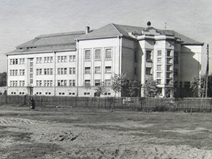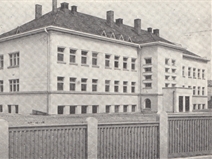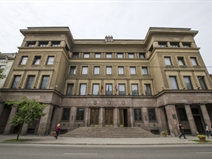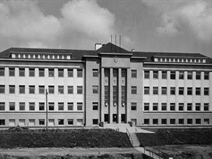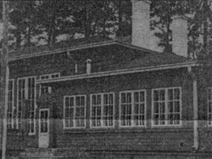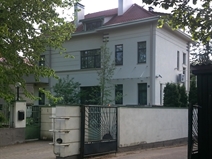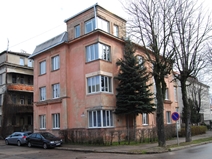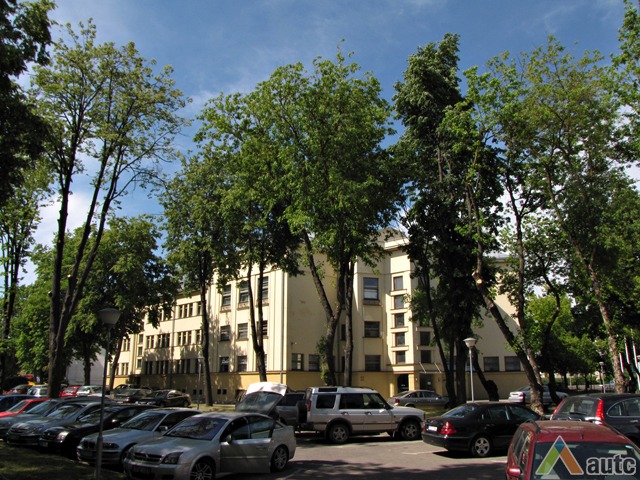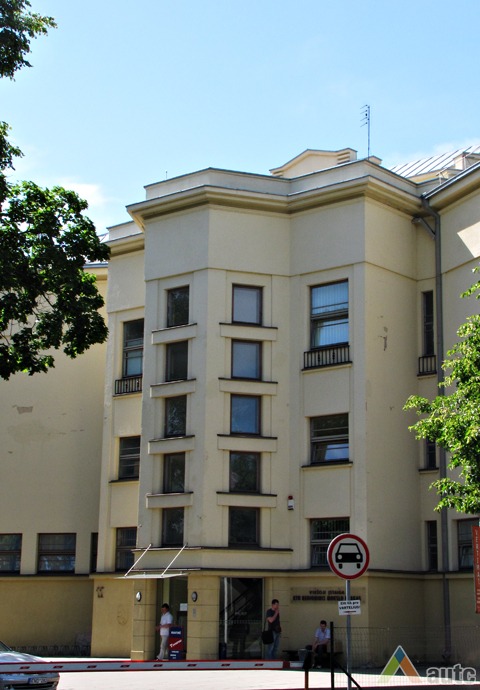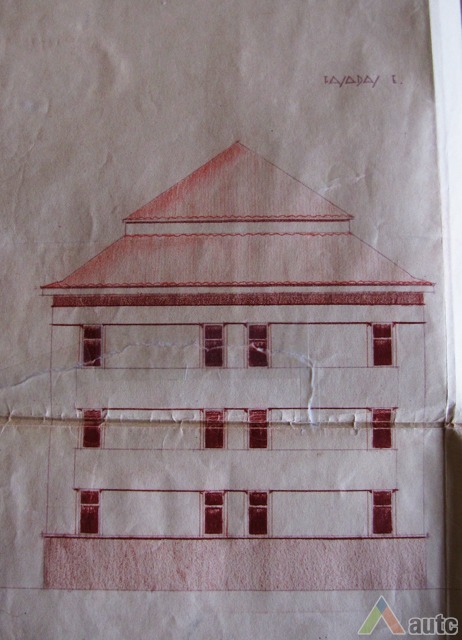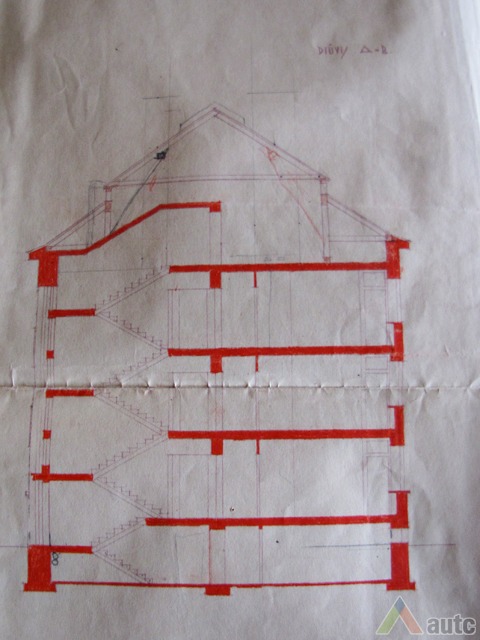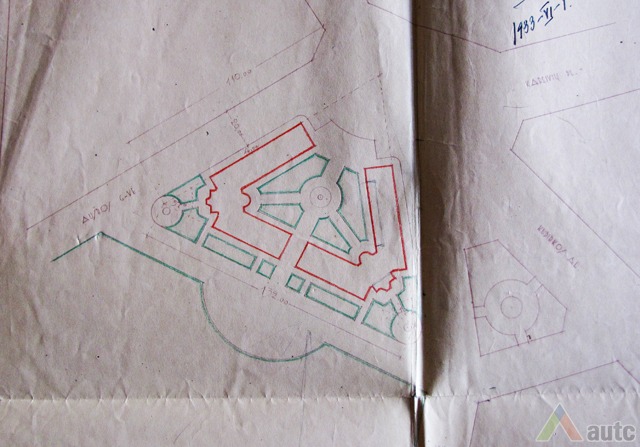Demographic changes of Kaunas as the temporary capital, primarily caused by the number of incoming workers, increased the demand for cheap apartments with all amenities. In the second half of 1932 it was decided to build the first modern three-story colony apartment house out of brickwork. The design of the colony was delegated to architect Stasys Kudokas.
Irregular, V-shaped colony was designed having in mind the fact that another identical building would be built in the future, thus forming a triangular-shaped courtyard. The object itself had three sides – the Southwestern, the Southeastern, and the Northeastern. It was the largest implemented residential house project during the interwar period; therefore, although having lost its functional purpose, it remains a unique example of the Lithuanian school of architecture.
The draft intended to change the layout of the colony and establish a dispensary, a library and a driving school. These facilities were to be set up on the first, second and third floors respectively on the Southeastern (the shorter) side of the building. Such changes prompted various municipal divisions to write requests to include other government institutions in the building; it only reaffirms the fact that there was a lack of public facilities in Kaunas at that time.
In 1934 the draft of the building was completely changed and the idea of colony apartments was transformed into a building for government institutions. It included Žaliakalnis Dispensary, a kindergarten, a Medicine-Sanatorium Department, Žaliakalnis Mother and Children Health Care Centre, Social Insurance Department, a pre-school, a library, maternity home, emergency staff apartments of Sewer Department, a 28-bed hospital named after Colonel Ryan, and a room for city municipality’s archives in the basement.
Paulius Tautvydas Laurinaitis
